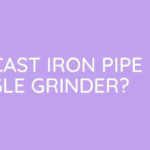How to cut firebricks? Before cutting you must understand what it is made of. Firebricks or refractory bricks are blocks made out of refractory materials of ceramic and accustomed to withstand high temperatures. You can find its use inlining of the furnace. Besides, you can also find them in fireplace, kiln, or fireboxes. These bricks can withstand temperatures up to 1800 degrees Fahrenheit. In general, they will possess less thermal conductivity. The firebricks exhibit greater energy efficiency.
Contents
Method 1: With Hammer And Chisel
Step 1
Step 2
Step 3
Method 2: With A Circular Saw
Step 1
For using a circular saw for cutting firebricks, you need to consider the hazards associated. You would be required to wear a mask to prevent dust and use goggles for eye safety. Also, use earplugs to avoid noise hazards.
Step 2
When you use a circular saw, if you can estimate the cutting line, you need not mark the brick. Firmly clamp the block of firebrick before execution. Use hammer and chisel to remove rough edges. Also, shaping curvature, the chisel, and hammer would be needed.
Check out the list of high quality circular saws.
What Do You Need?
1.One Hammer
You need a hammer to facilitate the chisel in creating firebreak cleavages. Moreover, masonry hammers are tools to get rid of rough edges. That is finishing of cut firebricks.
2. One Chalk
For marking purposes, chalks are essential for scoring with chisel around the brick. For uniqueness, the markup is required on all four sides of the brick.
3. Firebricks You Want To Cut
The firebricks are thermal resistant, mostly used at heated locations. You can find them in the furnaces. They can also be found in kiln and fireboxes. The requirement for cutting firebricks requires you to collect ones for use.
The naked eye cannot visualize the difference between a typical brick and a firebrick. But, the later has a lot of other features.
- Temperature variation: Firebricks are capable of withstanding temperature to 1800⁰ Fahrenheit. That is not possible for standard bricks to achieve. Their low porosity and heaviness make them perfect for heated applications. For example, Industrial furnace lining is done with firebricks.
- Chemical composition: The standard bricks contain silica, alumina, magnesia, lime, and alkalis. However, firebricks apart from alumina and silica also include others. Others like titanium, ferric oxide, and metallic oxides get added.
- Color Variation: The firebricks are generally white, quite distinct from regular brick. In some cases, colors may be red, jet black, smooth green, or espresso.
- Shape: While regular bricks can be produced in any shape as required by the construction team. The fire bricks are always rectangular. Over and above, firebricks can withstand mechanical and thermal stresses more.
- One circular saw or a brick table saw.
- Once the markup is done and scoring with a chisel is complete, the circular saw can be used. Only a three-millimeter scoring is sufficient.
- A safety goggle: It is a part of the PPE required by HSE rules. It protects eyes from hazardous effects produced by saw.
- A mask: Again personal protection equipment preferred to avoid dust produced during cutting firebricks. Any respiratory ailment can be avoided.
- One chisel: E chisel is used for scoring on the brick. It makes cutting grooves along the markups—markup along all sides of the brick-making provision for circular saws to follow.
- Earplugs: Maximum audibility is allowed within 10decibels. However, in the workspace, significantly cutting firebricks can produce noise more. For avoiding loud sounds, earplugs are needed. The earplug also forms a part of PPE.
- Measurement tape (optional): If a perfect dimension is required, a measurement tape might be needed if the cutting position can be estimated while cutting. The circular saw doesn’t need of ideal dimension, hence no measuring tape.
Why Should Firebricks Be Used In Your Oven?
- The firebricks release heat slowly.
- They store heat efficiently.
- The firebricks can withstand higher temperatures compared to normal ones.
- The firebricks reflect light that makes cooking easier.
- More traditional use
- Ovens made of firebricks own classic attire.
- The firebricks have no-toxic additives.
FAQs
1. Why are firebricks expensive?How dangerous is firebrick dust?
Firebricks are high duty component. They contain more amount of alumina. The firebricks are designed for serving continuously heated situations. All these factors add to their cost.
2. What are the alternatives to firebricks?
Few alternatives can be stated. The soapstone and sandstone are good. The refractory concrete is another. The use of red clay can also be satisfactory.
3. Are firebricks toxic?
The firebricks don’t contain any hazardous chemicals. They have been tested as 100% inert. Hence, the probability of any toxic reaction is impossible.
4. What about the presence of asbestos in firebricks?
It is most likely that prefabricated fireplaces would traces of asbestos. But hearths might be present with substances like asbestos, brick, iron, and steel.
5. How dangerous is firebrick dust?
The firebrick contains silica. In case silica is inhaled, it may cause terrible respiratory ailments. Firebrick dust will inevitably contain silica. That is dangerous can cause silicosis.
6. Can the angle grinder be used for firebrick cutting?
Yes, hold the grinder firmly using both arms. Hold it perpendicular to the brick. You cut on the waste side, i.e., area beyond the mark you are not using.
Final Thoughts
The firebricks are quite different from normal bricks. Unlike normal bricks, firebricks are different to sustain higher temperatures. They are less porous and heavier. The firebricks vary in color. In industrial applications like the furnace, the firebricks can be found as lining. A chisel and hammer can make effective cutting; otherwise, a circular saw can also be used to cut firebricks. But, not only because of using power tools like a saw, the problem of dust and sound is familiar. So, using PPE is required.









Leave a Reply